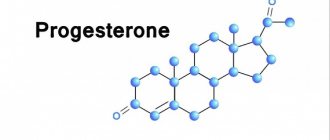Phosphorus (phosphorus) is one of the most common chemical elements on our planet. Phosphorus makes up 0.08 - 0.09% of the mass of the Earth's crust.
Phosphorus plays an important biological role and serves as a building material for many cells of living organisms. In the plant world, it is found in all plants. The highest concentration is observed in fruits and seeds of plants.
In the animal world, phosphorus is part of proteins and many vital organic compounds, including enzymes, nucleic acids, and so on. Phosphorus is found in the tissues and organs of living organisms, but the largest amount is found in bone tissue and tooth enamel.
The average human body contains from 500 to 750 grams of phosphorus, with 90% (calcium phosphate) concentrated in bone tissue. In combination with calcium, phosphorus forms mineral structures that provide strength to bone tissue and tooth enamel. Phosphorus plays an important role in the formation of muscle tissue and brain tissue, and is included in their composition as a building material.
One of the important functions of phosphorus is its participation in energy processes occurring in the human body.
In the tissues of a living organism and food products, phosphorus is contained in the form of phosphoric acid and organic compounds of phosphoric acid (phosphates).
Participation of phosphorus in biological processes of the body
Phosphorus is not only included in living cells in the form of a building material, it also takes part in many vital biological processes occurring in the human body:
- Cell division. Phosphorus is involved in the processes of division of living cells and their growth. It is part of nucleic acids, as well as the structure of cell membranes in the form of phospholipids and phosphoproteins.
- Energy synthesis. Phosphorus takes part in the formation and transport of adenosine triphosphate (ATP) molecules, which store energy in our body.
- Metabolism. Phosphorus takes part in the metabolism and production of carbohydrates and proteins.
- CNS. Phosphorus is involved in biological processes that ensure the transmission of electrical impulses along nerve fibers and brain tissue.
- Balance of phosphorus and calcium. Phosphorus and calcium interact closely in the human body and participate in the formation of the same biological structures. In the human body, with the help of parathyroid hormones, a certain balance is maintained between the content of phosphorus and calcium in tissues and organs. This balance is 2 to 1, two parts calcium to one part phosphorus.
- Other functions. Phosphorus interacts with many enzymes and activates the work of vitamin D and B vitamins.
Total information
Location on the periodic table D.I. Mendeleev: in the old version - III period, III row, V group, in the new version of the table - 15 group, 3rd period.
- Atomic number – 15
- Atomic mass – 30.973762
- Electronic configuration – [Ne] 3s2 3p3
- Melting point (°C) – 44.15
- Boiling point (°C) – 279.85
- CAS: 7723-14-0
Physicochemical characteristics. Phosphorus is known in many modifications - white, red, yellow, black, metallic, etc., which are also called allotropic. Physical and chemical properties directly depend on its form, especially its chemical activity.
White phosphorus is a chemically active substance that is white with a slight yellowish or greenish tint, similar to paraffin, and is easily deformed with little physical effort. Poorly soluble in water, upon contact with oxygen and light it begins to glow pale green. A slight exposure to temperature can lead to spontaneous combustion of the substance. Very poisonous - ingestion of just 0.05-0.15 g of the substance can be fatal. Upon contact with skin, it is also capable of self-ignition, after which it leaves severe burns.
Red phosphorus is a more heat-resistant form of the element, which is obtained from its white form. Painted in red, purple colors with a metallic sheen. It does not dissolve in water, does not glow in the dark, and can spontaneously ignite upon impact or friction. The toxicity is thousands of times less compared to white. It is used in the manufacture of matchboxes - it is part of the rubbing surface.
Phosphorus in food
The norm of phosphorus per day is 800 mg, the maximum allowable amount of consumption is 1600 mg.
The bioavailability (ability to be absorbed by the body) of phosphorus supplied with food is no more than 70%. Only fish phosphorus is almost completely absorbed in the intestines.
Phosphorus is found in products:
- milk, dairy products (cheeses)
- meat, offal (beef liver), poultry, eggs
- fish, sturgeon caviar
- bread, oatmeal and buckwheat
- walnuts, seeds
- vegetables, greens (pumpkin, parsley, cabbage, spinach, garlic, carrots).
Daily requirement
Recommended daily doses of phosphorus depending on gender and age:
| Children | up to 1 year | 100-275 mg |
| From 1 to 3 years | 460-3000 mg | |
| From 3 to 9 years | 500-3000 mg | |
| Teenagers | from 9 to 18 years | 1250—4000 mg |
| Adults | from 18 to 70 years | 700-4000 mg |
| Elderly people | over 70 years old | 700-3000 mg |
| During pregnancy | up to 3000-3500 mg |
For maximum efficiency in the absorption of phosphorus by the body, it must be consumed simultaneously with calcium, in a ratio of 1.5 (P) : 1 (Ca).
The daily dose of phosphorus increases with heavy physical activity and sports.
Lack of phosphorus in the human body
Causes of phosphorus deficiency:
- phosphorus metabolism disorders
- unsatisfactory amount of macronutrient intake into the body (low protein intake)
- excessive levels of magnesium, calcium, barium, aluminum compounds in the body
- excessive consumption of synthetic drinks (carbonated drinks, etc.)
- long-term chronic illnesses
- poisoning, drug addiction, alcoholism
- pathologies of the thyroid gland, parathyroid glands
- kidney disease
- feeding an infant with artificial formula
Symptoms of phosphorus deficiency:
- general weakness, loss of appetite, exhaustion
- muscle and bone pain
- Resistance to infections and colds decreases;
- liver protein synthesis decreases
- dystrophic changes in the myocardium, hemorrhagic rashes on the mucous membranes and skin appear
- in some cases – mental disorders
- rickets, periodontal disease
When there is more phosphorus than calcium in the body, the human body will use the calcium that is stored in the bones.
Where is phosphorus found?
The main sources are products of animal origin: cottage cheese, meat, egg yolk. It is also present in grains, legumes, pumpkin (pulp and seeds), sesame seeds, pistachios, pine nuts, but it is difficult for a person to absorb it, since the intestines do not have the necessary enzyme to break down phytin compounds, in the form of which the macroelement comes from plant foods.
Therefore, no more than 20% is absorbed. The highest digestibility of P is typical for seafood, in this case 99% is absorbed. If you are deficient in phosphorus, supplement your diet with fish from the cod or salmon family; mackerel and carp are also suitable.
Excess phosphorus in the human body
Phosphorus and phosphates are non-toxic. The lethal dose for humans is considered to be 60 mg of phosphorus. A number of phosphorus compounds (phosphine) are highly toxic. Poisoning with phosphorus compounds provokes dysfunction of the kidneys and liver, cardiovascular system, digestive tract, as well as other systems and organs.
Causes of excess phosphorus:
- excessive phosphorus intake (excess protein in foods)
- consumption of large quantities of canned products, lemonades
- long-term interaction with organophosphorus compounds
- phosphorus metabolism disorders
Symptoms of excess phosphorus:
- deposition of poorly soluble phosphates in tissues
- damage to the digestive tract and liver
- bone decalcification (osteoporosis)
- hemorrhages and bleeding
- leukopenia, anemia
Bone Health – Why It's Important to Consider
We take care of the health of blood vessels and the heart, the condition of the skin, intestinal microflora, and devote a lot of time to muscle training. But we forget that the skeleton is the basis of the body. It is he who creates the support. Bones anchor muscles, protect internal organs, and retain calcium.
The human skeleton is a collection of bones of the human body, the passive part of the musculoskeletal system.
The adult human skeleton consists of 206 bones. Of these, 32-34 are unpaired, the rest are paired. 23 bones form the skull, 32-34 - the spinal column, 25 - the ribs and sternum, 64 - the skeleton of the upper extremities, 62 - the skeleton of the lower extremities.
Source Wikipedia
It is important to take steps to protect your bone health.
A number of factors influence their health:
- Floor;
- Age;
- Weight;
- Nutrition;
- The amount of calcium in the diet;
- Physical activity;
- The risk of developing osteoporosis is increased by alcohol abuse and smoking.
Bones become stronger up to 25 years of age, but after 30 they lose strength if a person leads a sedentary lifestyle and does not maintain the balance of such important elements as phosphorus, calcium and magnesium. During the entire skeletal growth phase, the body must receive sufficient amounts of calcium and vitamin D to build it up.
It is especially important to take care of bone health for women during menopause. During this period, bone density decreases and the risk of osteoporosis increases. Any awkward movement or fall can result in broken bones.
The following will help replenish your calcium, magnesium, phosphorus and vitamin D reserves:
- Dairy products;
- Animal protein;
- Eggs;
- Fish, seafood;
- Vegetables;
- Fruits;
- Whole grain.
Harm from phosphates used in the food industry
In the food industry, phosphates are used in products for the following purposes:
- As an acidulant in carbonated drinks
- Phosphates retain water in food, increasing its weight and volume, preventing the formation of broth-fat edema, and preventing drying out during storage. Mainly used in fish, poultry and meat products (boiled, boiled-smoked sausages, sausages)
- Phosphates are added to condensed milk to help prevent the product from crystallizing.
- They are added to dry bulk products, preventing caking and the formation of lumps in the powder. It is used in dry cream, milk powder, powders containing dry cocoa.
- Added to processed cheeses, providing their consistency
- Used for temperature processing of milk and dairy products
- When making ice cream and other products from dry mixes, phosphates increase the rate of their dissolution during production.
- Used to increase the shelf life of butter and margarine
The following symbols can be found on the labels:
- E 340 - potassium phosphates
- E 338 - orthophosphoric acid (or simply phosphoric)
- E 343 - magnesium phosphates
- E 341 - calcium phosphates
- E 342 - ammonium phosphates
Consequences of the harmful effects of phosphates:
- Excessive intake of phosphates into the human body disrupts the balance in tissues between phosphorus and calcium, which leads to disruption of the structure of bone tissue and disruption of metabolic processes in the human body. Excess phosphorus leads to bone diseases in the form of osteoporosis.
- Excess phosphorus leads to an increased risk of cardiovascular diseases and an increased risk of heart attacks. This occurs due to the deposition of calcium on the inner walls of blood vessels, which leads to their blockage. All this occurs due to a disturbance in the calcium-phosphorus balance.
Video
And finally, an educational video on the topic of our article.
Author: Pavel Chaika, editor-in-chief of Poznavaika magazine
When writing the article, I tried to make it as interesting, useful and high-quality as possible. I would be grateful for any feedback and constructive criticism in the form of comments on the article. You can also write your wish/question/suggestion to my email [email protected] or Facebook, with respect, the author.
Author page
Interaction of phosphorus with other elements and drugs
Phosphorus in its pure form is a chemically unstable element, so it easily interacts with other substances. In nature and in our body, phosphorus is found mainly in the form of chemical compounds with other substances.
The content of phosphorus and its compounds in our body can be influenced by various external factors and other substances coming from food.
Let's consider substances that can have a significant effect on the phosphorus content in the human body:
- Alcohol can leach phosphorus from bones and reduce overall phosphorus levels in the body.
- Antacids (reduce stomach acid) containing aluminum, calcium or magnesium can bind phosphate in the intestines. When used long-term, these drugs can lead to a decrease in phosphorus levels in the human body (hypophosphatemia).
- Anticonvulsants may lower phosphorus levels and increase levels of alkaline phosphatase, an enzyme that helps remove phosphate from the body.
- Bile acid drugs lower blood cholesterol levels. They may reduce the oral absorption of phosphate from food or supplements. Oral phosphate supplements should be taken at least 1 hour before or 4 hours after these medications.
- Corticosteroids, including increasing urinary phosphorus levels
- Potassium or drugs that are high in potassium can cause too much potassium in the blood (hyperkalemia). Hyperkalemia can cause dangerous heart rhythm problems (arrhythmias). Salt substitutes that also contain high levels of potassium and phosphorus may cause low levels when used in the long term.
- ACE inhibitors (blood pressure medicine). These are drugs called angiotensin-converting enzyme (ACE) used to treat high blood pressure that can lower phosphorus levels.
- Other medications can also reduce phosphorus levels. These drugs include cyclosporine (used to suppress the immune system), cardiac glycosides (digoxin or Lanoxin), heparins (blood thinners), and nonsteroidal anti-inflammatory drugs (such as ibuprofen).
History - brief information
Phosphorus got its name from two ancient Greek words “φῶς” (light) and “φέρω” (I carry), combining which we get - luminiferous.
The existence of phosphorus was first announced in 1669 by a German alchemist from Hamburg, Hennig Brandt. Brand got it completely by accident - when he tried to extract gold from human urine. Of course, the logic of the people of those times was unique - since urine is golden, it means there may be gold in it. As a result of many days of settling, and after prolonged evaporation of urine, instead of liquid, white wax-like particles of an unknown substance remained in the container, which could burn brightly and flicker in the dark. H. Brand called the newly discovered substance “a miraculous carrier of light” (phosphorus mirabilis).
Further, P was discovered by the German chemist Johannes Kunckel, in 1680 by the Anglo-Irish chemist and physicist Robert Boyle, in 1743 by the German chemist Andreas Marggraf and others.
A. Schrötter managed to obtain red phosphorus in the middle of the 19th century, which happened by heating white phosphorus without contact with oxygen.









